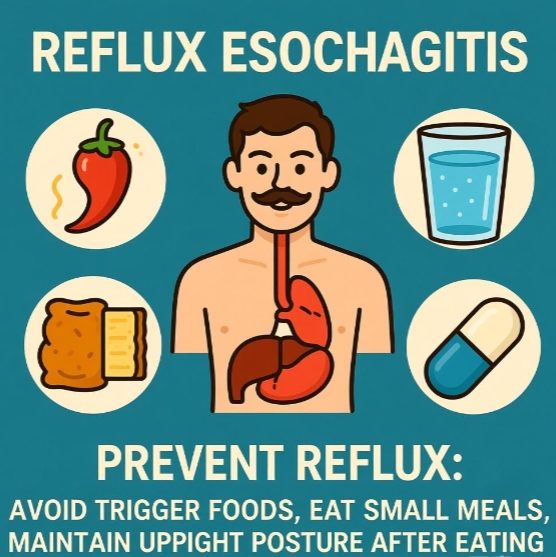The core issue is retrograde flow of gastric contents (acid, pepsin, bile) into the esophagus, leading to mucosal erosion. Key mechanisms include:
- Reduced lower-esophageal-sphincter (LES) pressure or frequent transient LES relaxations (TLESRs) that disable the anti-reflux barrier
- Hiatus hernia, which weakens the diaphragmatic crus and creates an acid pocket
- Impaired esophageal clearance (weak peristalsis, reduced saliva) that prolongs acid exposure
- A damaged mucosal barrier (widened intercellular spaces, thinner mucus layer) lowering resistance to aggressive factors
Obesity, pregnancy, late-night meals, high-fat diet, smoking, alcohol and drugs such as aspirin raise intra-abdominal pressure or directly relax the sphincter, aggravating reflux. Chronic reflux activates inflammatory mediators, inducing erosions and ulcers that may progress to circumferential disease or columnar metaplasia (Barrett esophagus).
| Key step | Main change | Precipitating factors |
|---|---|---|
| Anti-reflux barrier ↓ | Low LES pressure, TLESRs, hiatus hernia | High-fat meals, smoking, alcohol, obesity |
| Clearance function ↓ | Weak peristalsis, low saliva, long acid dwell | Dehydration, supine position, ageing |
| Mucosal barrier ↓ | Widened intercellular spaces, less mucus | Bile acids, NSAIDs, prolonged acid |
| Aggressive factors ↑ | Acid, pepsin, bile reflux | Large meals, coffee, aspirin |
